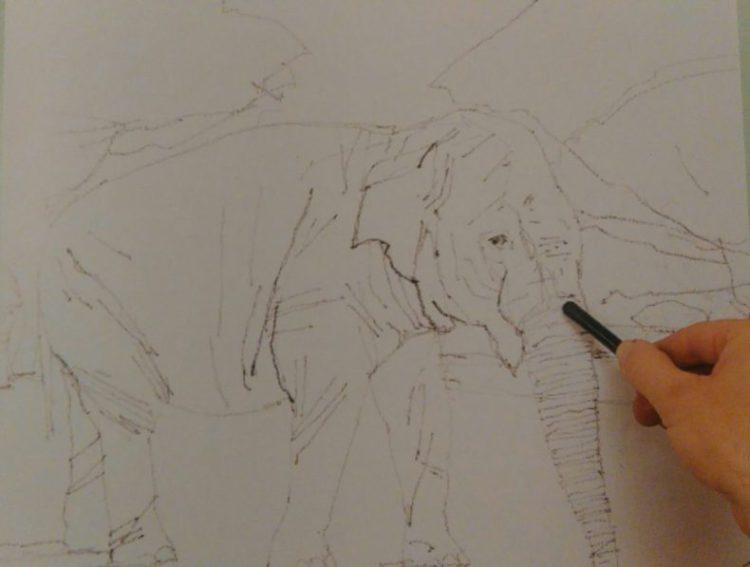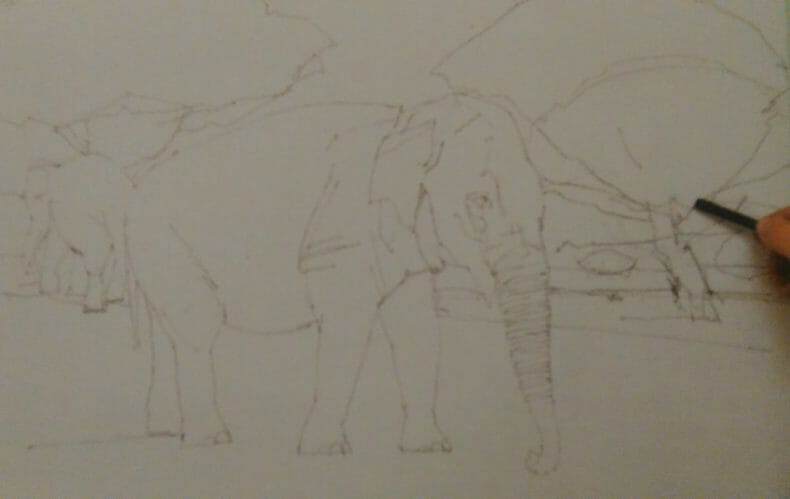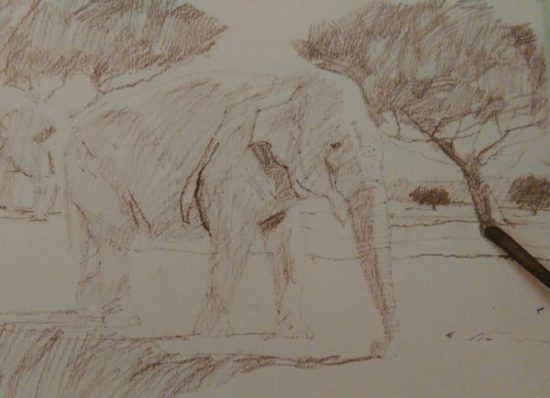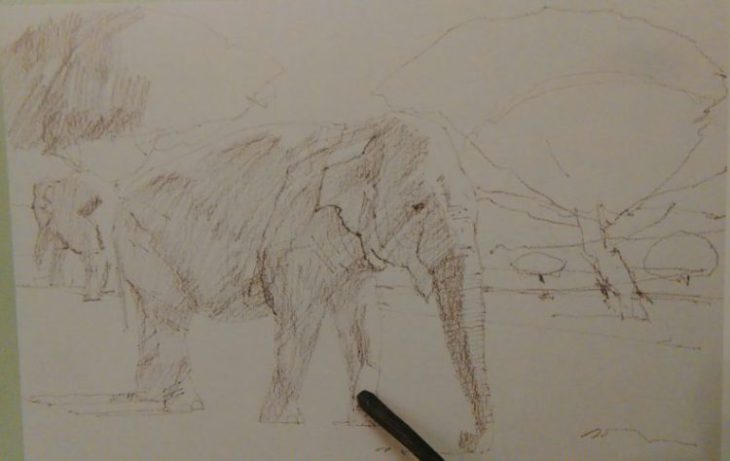For this technique, you can use several different kinds of erasers depending on the surface you draw on and the medium you use, also different erasers give a different effect on your drawing. I prefer using a kneaded eraser and plain hard rubber eraser. The texture of the lines “drawn” with the eraser also depends on the pressure applied while erasing the certain area of the drawing.
When using kneaded eraser you get soft edged lines giving the area shady effect, For sharper cleaner lines I suggest you use hard rubber eraser with harder pressure applied while erasing. There are really endless effects you can achieve once you try and learn what to use and when. I will here show you only one way of doing things, what is important is to remember always to experiment and find your own unique way and technique.
Erasers
As I already mentioned there are several different kinds of erasers and all give different effects when used. The best one to use for erasing charcoal is definitely a kneaded eraser, it works the best for removing all dusty mediums used for drawing like chalk, pastel and soft pencils.
The kneaded eraser is soft and flexible, can be easily sculpted to use on small surfaces for precise erasing, because of the soft structure it simply lifts pigments of the paper leaving pure whiteness and the undamaged surface you draw on.
There are also rubber and plastic erasers used for drawing effects but we will use only kneaded eraser since the drawing I will show you how to create is drawn with charcoal.
For this drawing, you will need the following:
- One sheet of quality natron paper
- Thick and thin charcoal sticks
- The kneaded eraser



Drawing of the elephants
Use the thin charcoal stick to draw the contours of the elephant and line of the horizon. Don’t put any pressure while drawing this is just the first phase of drawing where you still can erase all the mistakes with the kneaded eraser.
Draw the contours of the trees next with the rim of the charcoal stick, hand still needs to be relaxed, wide moves, don’t add any details yet just try to draw slight lines.
After you finished the first phase of sketching start adding details to the objects in the front plane like the elephant and the tree.
Draw lines on the elephant changing pressure on the charcoal stick to get lines of different strength and thus create an effect of light and shade.
Do not linger long on the details, let the composition grow simultaneously while adding details to all objects one by one.
Work a bit more on the elephant and the tree bark, add wrinkles to it with lighter and darker lines. Use a thicker charcoal stick to add shade on the both of the elephants to point out on their size.
Draw lines with light moves in different directions, try to follow the natural lines on elephants skin, do not apply much pressure let the charcoal stick.
Add shade to the tree on the left side as well. At this point, you will need to spray fixative over the drawing to preserve all you have done so far.



Adding Shade
Roughly work on the shades of the elephants and then continue working with the thick charcoal stick to add tone and texture to the treetops.
Change the direction of the shading as well as hatching to emphasize on the contrast in the texture of the objects.
Sketch the trees and hills in the distance to point out the size and “weight ” of the elephants. Leave whiteness on the paper to create the impression of sunlight on the objects.
Add more shade to the elephant in the background and then go to the other one and using thinner charcoal stick add shade cross-hatching pointing out the details with finer lines.
Make sure you leave enough space between the lines done with cross hatching so the layers added before are still visible.
Use the thinner charcoal stick to make the trees in the background darker and add shade to the left side of the treetop in the front part of the drawing in order to show where the sunlight is coming from.

Drawing with eraser
Now its time to use the kneaded eraser to point out the lighter areas where the sunlight is illuminating elephants skin. Add more shade to darker parts of your drawing to emphasize the contrast.
Thus created strong tone contrast points out the elephant in the front plane giving your drawing depth and more realistic look. Make strong sharp lines with the eraser to give elephants skin structure pointing out the wrinkles on its skin.

Final touches
The drawing is almost complete. Everything should have a nice shape and structure by now. Take time to observe your work. Add more layers of the charcoal on darker areas of your drawing. Work on the details till you feel you completed all the way you wanted.
When you are satisfied with what you have drawn it is time to use fixative to preserve your work. Because charcoal is the medium with a very dusty structure I would suggest spraying it with fixative at least two times.
Remember to spray from the safe distance so you do not smear the surface of your drawing, let the first layer dry completely before you add another one spraying in the opposite direction.
This is one way of drawing with erasers, as I said experiment find your own way anything goes as long as you enjoy. If you have any questions regarding the subject please feel free to leave them below and I’ll make sure to answer and try to help in any way I can.





Very nice graphics! Keep going!
Hi Sasa, thank you for your nice comment.